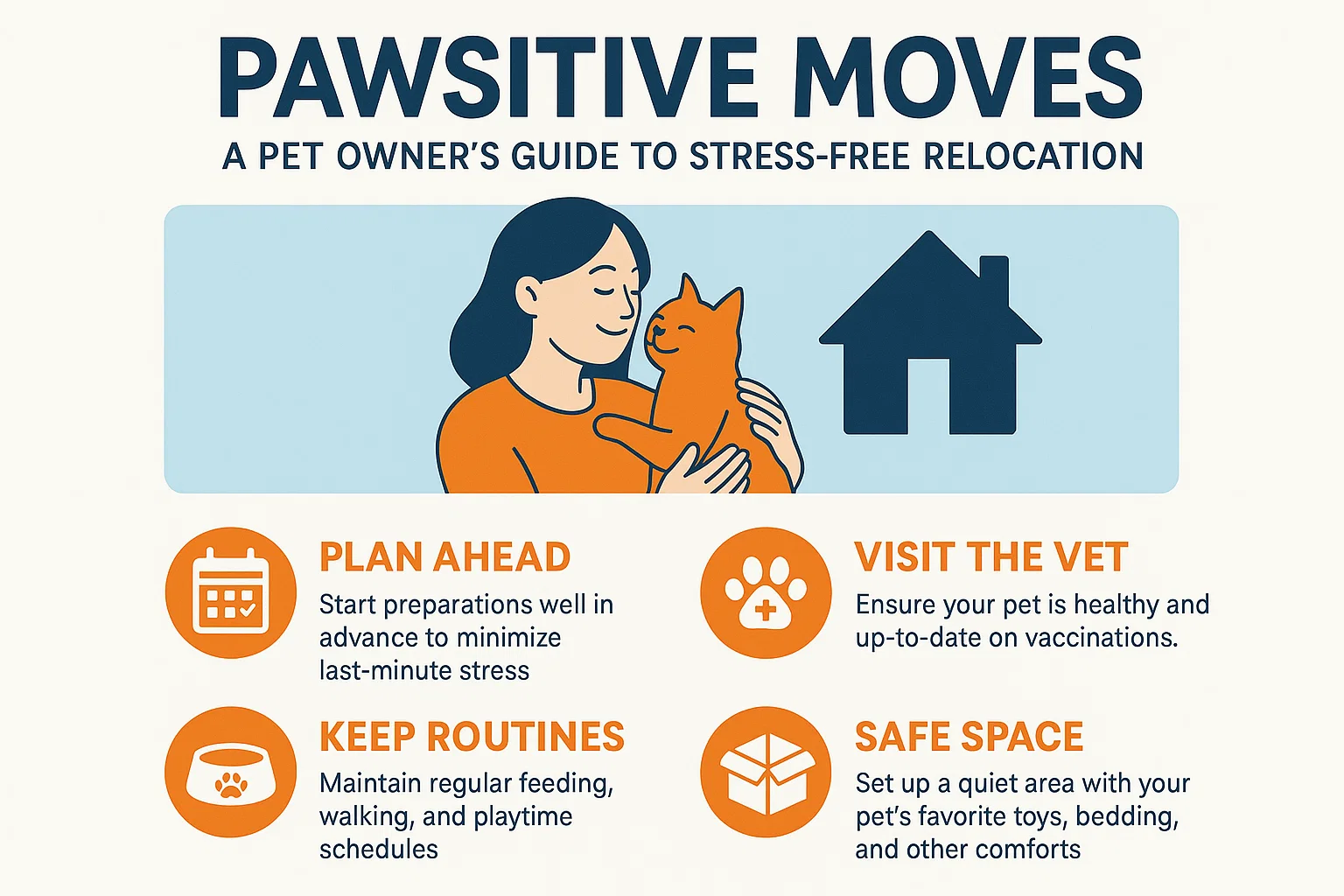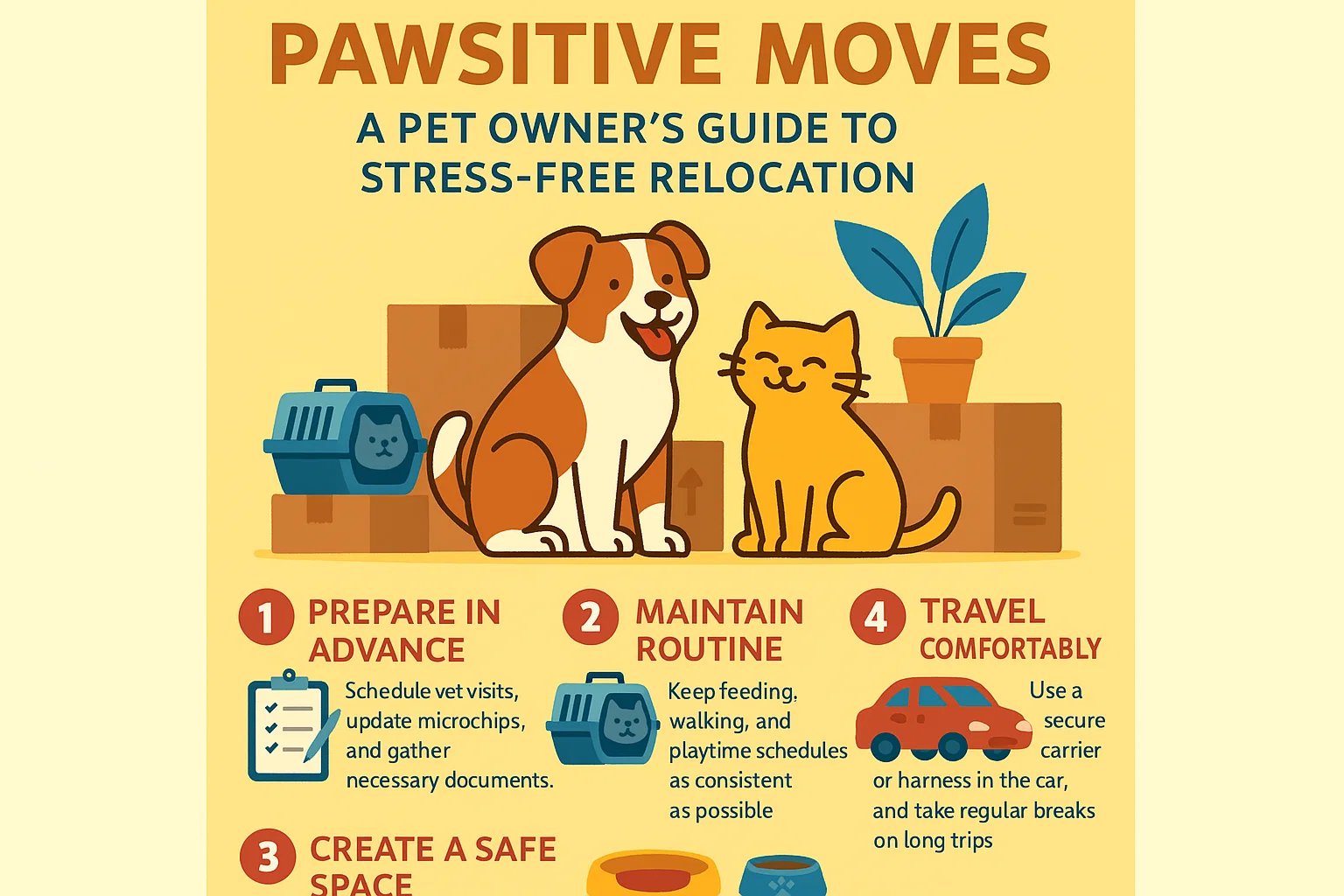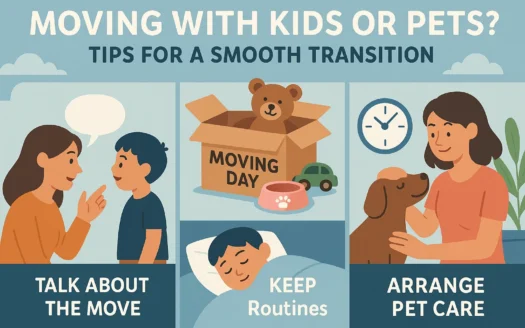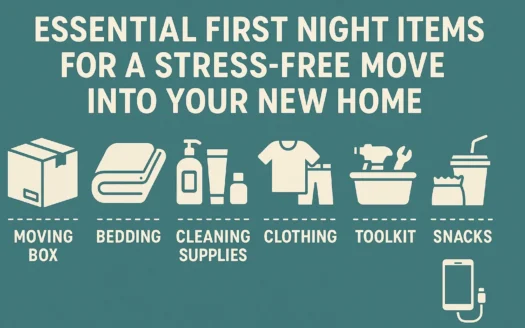Pawsitive Moves: A Pet Owner’s Guide to Stress-Free Relocation

Pawsitive Moves: A Pet Owner’s Guide to Stress-Free Relocation
Relocating can be overwhelming for humans, but pets often experience even greater anxiety amid the chaos. From unfamiliar sights to disrupted routines, animals need extra care to adapt smoothly. Here’s how to ensure a calm transition for your furry companions.
Canine Care During Relocation
-
1. Amp Up the Walks
Increased exercise helps curb restless energy, reducing destructive behavior during packing. A tired pup is far more likely to stay relaxed amid the upheaval.
-
2. Coordinate House Showings Strategically
Align showings with your dog’s regular walk schedule. If unavoidable, secure them in a crate to avoid stress from strangers in their space.
-
3. Designate Safe Zones
Block access to rooms with hazardous items like packing supplies or small objects. A restricted area minimizes risks during the packing frenzy.
-
4. Replicate Their Comfort Zone
Set up their bed, crate, and toys in a familiar layout. Unwashed blankets retain scents from your old home, providing reassurance in the new environment.
-
5. Prioritize Routine Consistency
Stick to established feeding, walking, and playtimes—even in a new time zone. Predictability anchors pets during times of change.
Feline-Friendly Moving Strategies
-
1. Leverage Boxes for Play
Introduce empty moving boxes early to satisfy curiosity. Add catnip spray to transform boxes into calming hideouts for anxious kitties.
-
2. Familiarize Them with Carriers
Gradually acclimate cats to carriers by placing meals and treats inside. A stress-free carrier experience is crucial for travel days.
-
3. Create a Sanctuary Room
Designate a quiet, low-traffic room with their essentials. Gradually expand access to other areas as they adjust to the new space.
-
4. Use Scent Marking
Transfer your cat’s facial pheromones to furniture and walls using a soft cloth. Familiar scents help them recognize the new territory as safe.
-
5. Enforce Indoor Time
Keep cats indoors for at least one week pre-move and two weeks post-move. The chaos of relocation increases escape risks.
Final Tip: Shower Them with Affection
Love ‘em up! Extra cuddles and playtime reassure pets during the adjustment period. With patience and these strategies, your fur-ever friend will soon embrace their new home with confidence.




